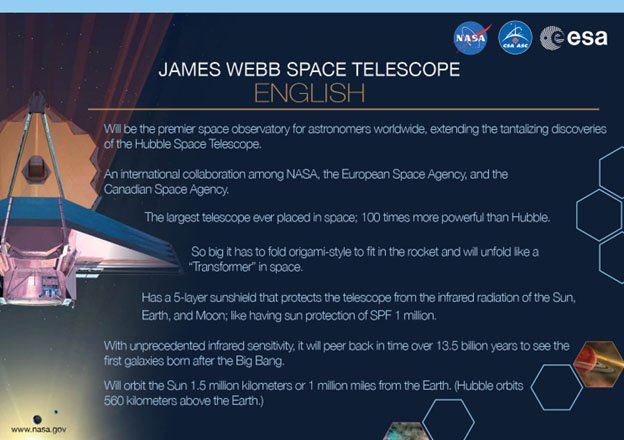James Webb telescope discovers its first Earth-sized exoplanet : What are exoplanets?
Context – The National Aeronautics and Space Administration (NASA) on January 11 announced that the James Webb Space Telescope has discovered its first new exoplanet. Researchers have labeled the planet as LHS 475 b, and it’s roughly the same size as Earth, the agency added.
Located just 41 light-years away, the planet orbits very close to a red dwarf star and completes a full orbit in just two days.
Researchers hope that in the coming years, owing to the Webb telescope’s advanced capabilities, they will be able to detect more Earth-sized planets. So far, most of the discovered exoplanets are similar to Jupiter as Earth-sized planets are much smaller in size and harder to discover with older telescopes.

(Credits- NASA)
What are exoplanets?
- Exoplanets are planets that orbit other stars and are beyond our solar system. According to NASA, to date, more than 5,000 exoplanets have been discovered. Scientists believe that there are more planets than stars as each star has at least one planet orbiting it.
- Exoplanets come in a host of different sizes. They can be gas giants bigger than Jupiter or as small and rocky as Earth.

(Credits – NASA)
Why and how do we study them?
- Studying exoplanets not only broadens our understanding of other solar systems but also helps us piece together information about our own planetary system and origin.
- The most compelling reason to learn about them is to find the answer to one of the most profound and thought-provoking questions of humankind — are we alone in this universe?
- Another important element of the study is finding out the distance between an exoplanet and its host star. This helps scientists determine if a discovered world is habitable or not. If an exoplanet is too close to the star, it might be too hot to sustain liquid water. If it’s too far, it might only have frozen water.
- When a planet is at a distance that enables it to have liquid water, it is said to be in the “Goldilocks zone”.
How are exoplanets discovered?
Discovering exoplanets is quite tough as they are small and hard to spot around their bright host stars. Scientists rely on indirect methods, such as the transit method, which is “measuring the dimming of a star that happens to have a planet pass in front of it”, according to NASA.
What are red dwarf stars?
Such types of stars are the most common and smallest in the universe. As they don’t radiate much light, it’s very tough to detect them with the naked eye from Earth. However, as red dwarfs are dimmer than other stars, it is easier to find exoplanets that surround them. Therefore, red dwarfs are a popular target for planet hunting.
Conclusion – JWST may enable us to discover more earth size exoplanets in future and answers some of the most intriguing questions humanity has regarding the origin of the universe.
Source – Indian Express
NEWS – James Webb telescope discovers its first Earth-sized exoplanet : What are exoplanets?
Syllabus – GS-3; Science and Tech


